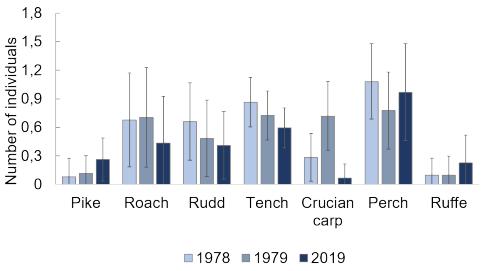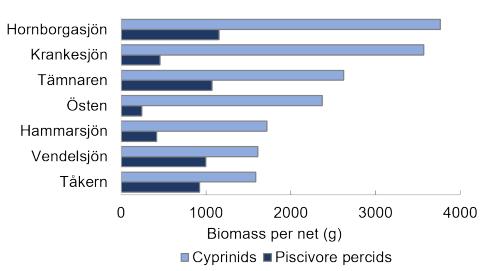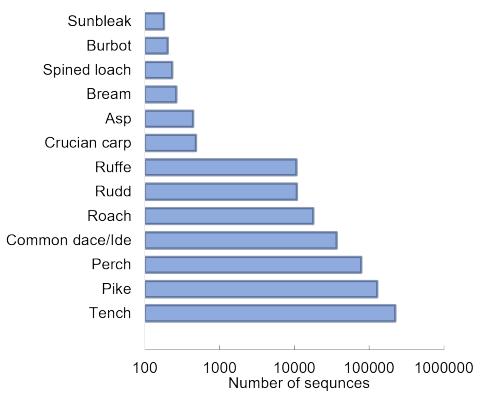Results
Comparative Study
The results showed that all the cyprinid species had decreased significantly 40 years later. The low oxygen tolerant crucian carp decreased 16-fold in numbers, which was expected due to fewer events of cold winters and hypoxia. Pike was the only species that had significantly increased 40 years later. One bream, a species known to increase turbidity and eutrophication in lakes, was caught from test-fishing.

Standerdized Test-fishing
The ecological status of the fish community was classified as intermediate through multimeric indexes but showed a high proportion of piscivore percids contra cyprinids, compared to data from six other shallow lakes in Sweden with similar characteristics.

eDNA-analysis
The analysis from the eDNA-samples detected 13 species, whereof sunbleak, asp and common dace/ide had never been found in the lake before. Similar mitochondrial DNA of common dace and ide made speciation between those species impossible.

Responsible for this page:
Director of undergraduate studies Biology
Last updated:
05/08/20
